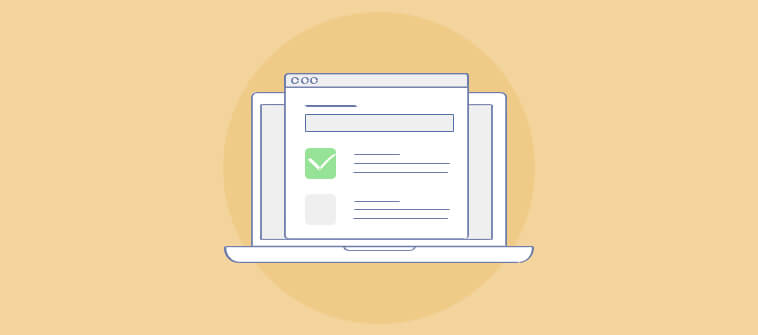
Let’s begin with a quick COVID-19 Poll.
If you answered (1) or (2), you have clearly adapted to the new normal – working from home. However, if your answer was (3) or (4), it is pretty evident that your overall productivity has taken a heavy hit.
This is the case with millions of employees across the globe in the COVID-19 era. Some of them like the new ‘work from home’ scenario, while others prefer the old ‘work in office’ culture.
In this blog, you are going to learn how to gauge employee preparedness to resume work from office, including:
- What is a return to work survey and its importance
- Top 9 questions to include in your return to work survey
- When to ask the survey questions
What Is a Return to Work Survey & Why It Deserves Your Attention?
In the COVID-19 scenario, there are concerns about contracting infection, travel woes in the light of low transportation availability, and the organization’s overall infrastructure preparedness to handle the crisis.
A return to work survey tries to understand your employee’s willingness to work from the office in these trying scenarios.
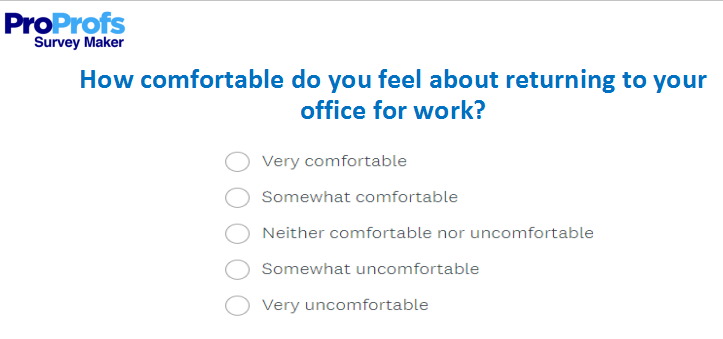
The return to work survey touches upon crucial points, like:
- Is the employee emotionally ready and physically fit to work from the office?
- Do they need extra support to juggle childcare and elderly responsibilities?
- Can they commute to the workplace like pre-COVID times?
The list goes on.
How does it help in the long run?
When you listen to your employee’s needs, you take an empathetic step forward as an employer. Small empathetic gestures can make your business stand out in a COVID-19 landscape. As you learn about your employees’ needs and concerns, you can better respond to the challenges they face. It strengthens your employees’ trust in your organization.
Furthermore, a return to work survey helps you handle any challenges collectively and be well prepared in advance. For example, in the pandemic era, maintaining social distancing is a prerequisite in the workplace. It requires employees to exercise patience and discipline. At the same time, employers need to put in extra infrastructural facilities like sanitizers, soaps or dispensers, temperature scanning machines, etc.
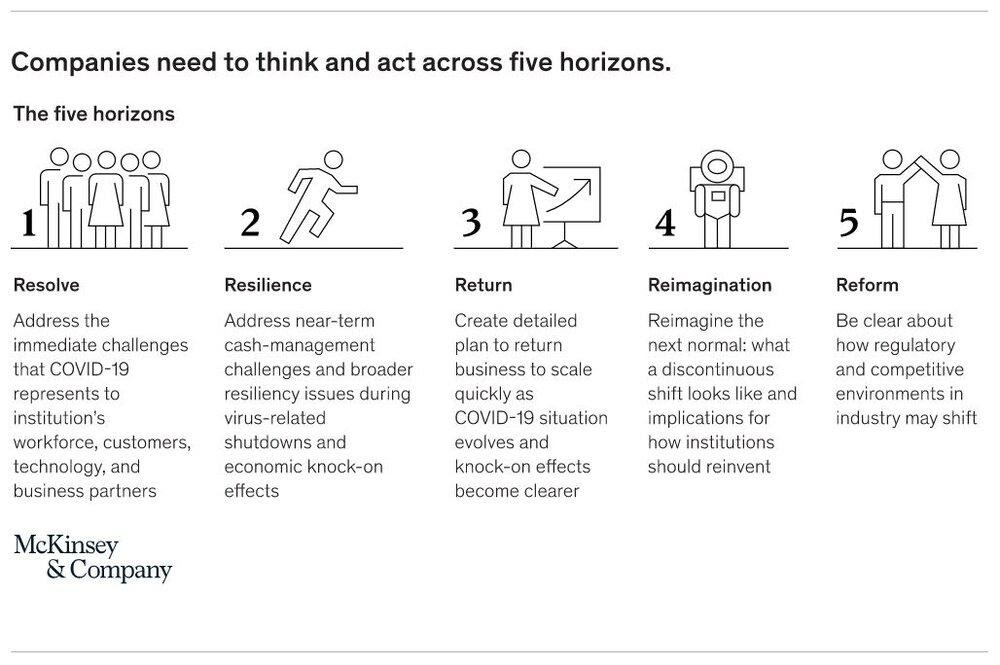
Image Credit: McKinsey and Company
Now that you have understood the importance of a return to work survey let us learn how to frame the right survey questions.
Let’s get started!
Top 7 Questions To Include in Your Return To Work Survey
The return to work survey questions need to cover an employee’s varied challenges for better analysis and planning. It ranges from workplace safety to demographic survey questions.
Hence, return to work survey questions are classified into basic seven categories:
1. COVID-19 Workplace Safety
Workplace safety is the number one factor that determines an employee’s willingness to get back to work. It pertains to questions related to infrastructural facilities at the workplace to handle COVID-19. For example, does your organization use temperature scanners to detect COVID-19 symptoms? Temperature check is a preliminary step in avoiding the spread of infection at the primary stage.
Similarly, does your company provide masks and sanitizers as a precautionary measure to avoid the spread of COVID-19? Employees need to be well-assured of these safety measures before you call them back to work.
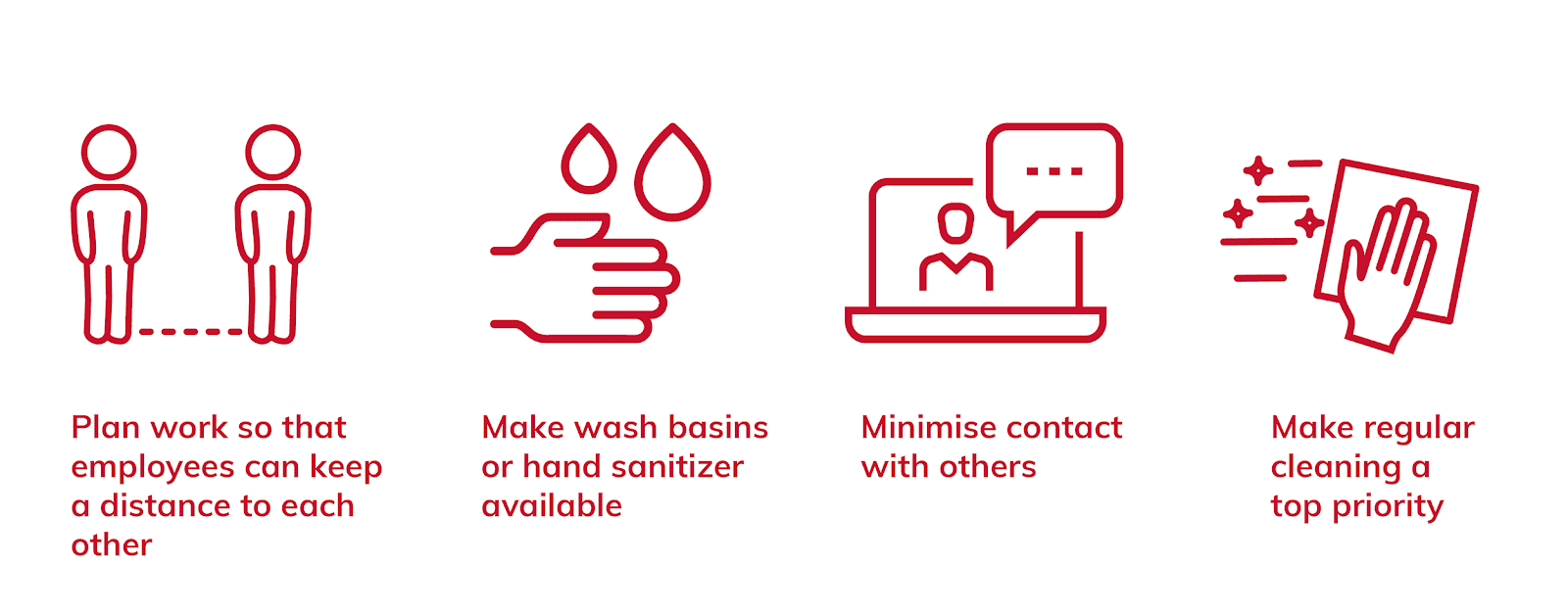
Image Source: Workplace Denmark
Based on the above factors, some questions to include in the return to work survey are:
1. What safety measures do you expect to see while you return to work from the office?
- Temperature scanning before an employee enters the office.
- Disposable safety gear like masks and sanitizers.
- Social distancing in office cubicles, meetings, and cafeterias.
- Availability of a vaccine.
- Clean desk policy, i.e., regular disinfection of desks, laptops, chargers, keyboards, etc.
- Installation of hand dispensers at prominent places to promote handwashing.
- Minimize outside visitors for in office visits to prevent the spread of COVID-19.
- Regular deep sanitization of the workplace, at least twice a week.
- _____________________Any other measure in your mind? (Do let us know)
2. Things to keep in mind while asking questions on safety factor:
- Be as specific as possible while asking for expectations.
- Give your employee an option to bring forth any concern that you may have missed out.
- Follow the WHO guidelines document on Workplace Safety to be compliant with all the safety features.
2. Employee Well-Being
In the critical time of COVID-19, employees are going through both physical and mental trauma. Either they could be a victim of COVID-19 or their family members could be. It could also be possible that they are coping up with the pain of having lost a loved one to COVID-19. In such a scenario, they might not be mentally ready to return to work at all.
As a responsible employer, you need to provide extra support and understand their concern during tough times. Spending some more time with their family could be really important for their situation. At the same time, you need to ensure that they are physically fit and do not show any disease symptoms before they resume work.
Lastly, reassure your employees about the steps in place to combat stigma against COVID-19 illness. For example, Afro Americans faced prejudice for the spread of 1918 influenza.
But, it is promising to see positive measures in the right direction. For example, a Harvard Business Review survey shows that 47% of companies have measures to combat workplace stigma, while 21% intend to follow suit.
Let’s see how to frame questions on employee well-being:
1. How do you feel about returning to work? Select all the options that apply.
- I feel healthy and energized.
- I am confident of getting all the support from the organization during the transition period.
- I believe that I will be treated fairly by my co-workers.
- I assure you that my issues will not affect my discharge of duty in any way.
- _______________________Any other (Please specify)
2. Things to keep in mind while asking questions on employee well-being factor:
- Ensure that you do not put forth direct and personal questions to your employees. For example, are you suffering from COVID-19? Herein, the employees may not be comfortable in answering this question. As empathetic employers, we need to respect our employees’ feelings and sentiments while framing the question. For example, instead of asking – Are you COVID positive?, you could ask – Do you have any symptoms like fever, breathing difficulties etc?
- There could be a situation that recovered employees might face discrimination from their co-workers. Make sure that you create awareness among all employees before asking them to return to work.
3. Remote Working Comfort
Many of us love the new normal – Work from home culture, don’t we?
Stanford study found that work from home increases employee productivity by 13%. Work from home gives you the flexibility to balance your personal and professional life. You get to cook and attend a con call at the same time, you take an afternoon nap to refresh yourself, and you flexibly complete the office tasks.
That’s good news, but…
Maybe some of your employees are accustomed to the routine and do not wish to go back to work from office post-COVID-19. Actually, you may have also realized that you don’t need all your employees in the office to complete the tasks. You then need to take a call on the flexibility to work from home post-COVID-19.
The best way ahead? Know it from the employees themselves.
Let’s consider a sample question on remote working comfort in your return to work survey.
1. Will you prefer to work from home even after COVID-19? Tick all the options that apply.
- I have a better work-life balance at home; hence I am better focused on my work.
- I travel from far; hence I save the commute time.
- I am comfortable coordinating with my manager and team members from home.
- I am not comfortable working from home – I get distracted easily.
- I do not have the necessary equipment to work from home for a more extended period.
- ———————————————————Any other(please specify)
4. Childcare and Elderly Responsibilities
We are aware of the fact that educational institutions continue to have online classes. Hence, most of the students study from home. It adds to the responsibilities of working parents and they juggle between online schooling and work from home.
Besides, many of your employees might have elders to take care of at home. Elders are at high risk of contracting COVID-19. Hence, they need extra care and support. Your employees might want to continue taking care of them while working from home. In this scenario, it is highly probable that they require your support in their work-life balance. Also, asking this question shows them that the employer genuinely cares about their family’s well-being.
For example, in the post COVID-19 US society, child daycare concerns were at the peak. This shows that women face the major brunt of increased childcare and elderly responsibilities.
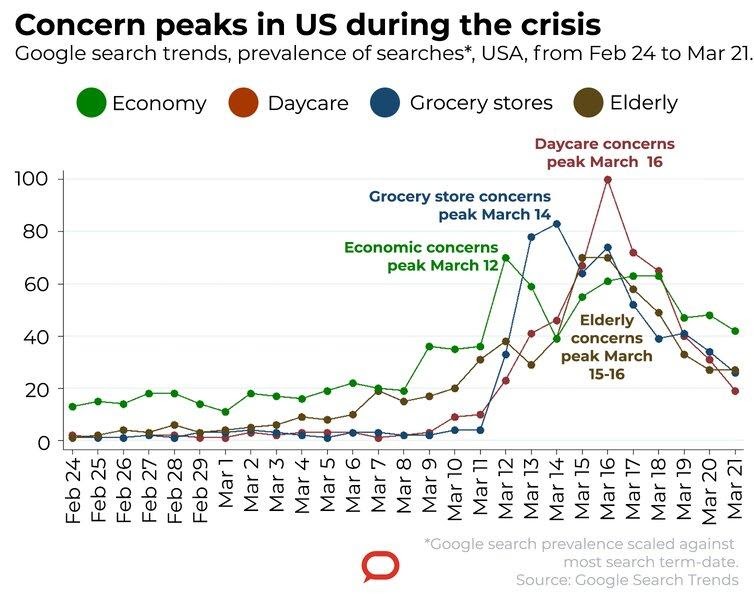
Let’s look into some sample questions on childcare and elderly responsibilities.
1. What is your living condition?
- I live alone
- I live with my family
- I live with my friends
- ……………………..(others, please mention)
2. Do you have any dependents?
- No
- Yes, my children
- Children and adults
- …………………..(others, please mention)
5. Transportation Challenges
In the last six months, travel has taken a hit amidst the pandemic. There is a drastic reduction in people who commute to the office for work. People who traveled long distances for work, find this as a relief.
But, what about others? Will this sentiment change when the COVID-19 situation gets better and public transport opens up?
An online survey conducted by University of Amsterdam surveyed commuters living across US and UK and arrived at the following result:
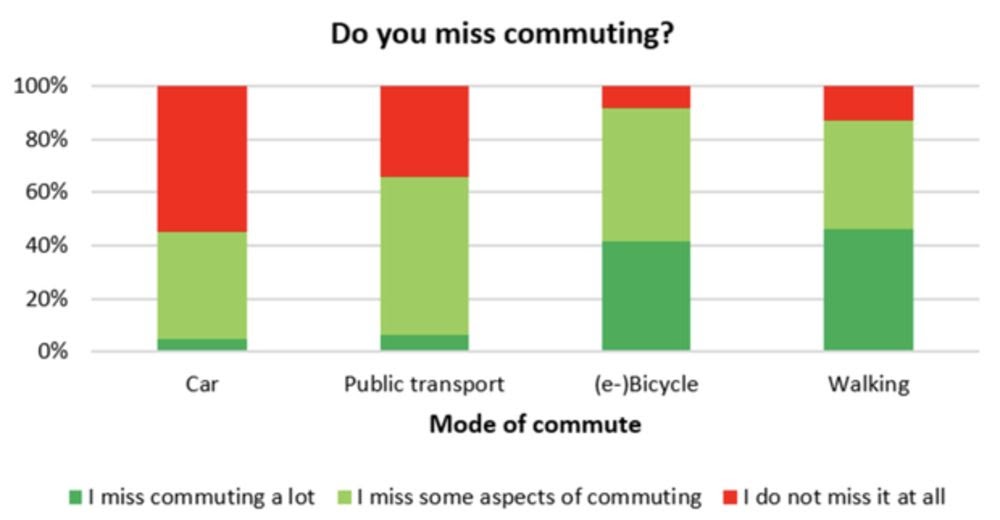
Herein, the majority of the surveyees do not miss commuting through the car or public transit as compared to bicycles or walking. Nevertheless, once things start getting back to normal and public transport reopens, will they be flexible and be adaptable?
For example, if they are comfortable returning to work through bike or bicycle mode, as an employer you need to ensure adequate parking facilities.
Private vehicle usage is likely to go up as it is the safest transportation mode with limited external contact and low risk of infection contraction.
Here are some examples:
1. How did you commute to work before COVID-19?
- Public transport
- Office shuttle
- Car
- Bike
- Cycle
- Walk
- ———————-Any other(specify)
2. How do you plan to commute after COVID-19?
- Public transport (if it opens up)
- Office shuttle
- Car
- Bike
- Cycle
- Walk
- ———————Any other(specify)
6. Team Management (Managerial Responsibilities)
Before COVID-19, team meetings were face to face in a conference room. One could discuss any issues and clarify queries on the spot. But, the era of one-to-one meetings could soon become a thing of the past.
COVID era opened up the possibility of leveraging technology to manage teams in the workplace. Team meetings are no longer held in a conference room; instead, they are held virtually. Herein, we end up having multiple calls throughout the day to check the work progress and communicate.
There are both pros and cons associated with the technology. On the one hand, you save crucial time by conveying the message online instantly. On the other hand, the internet and electricity glitches and unavailability of team members can delay work progress.

Furthermore, there could be challenges at the end of managers to maintain team cohesiveness. Managers’ role is vital to smoothen team coordination and post COVID transition back to the workplace culture.
Hence, you need to ask your employees about their work productivity in a scenario where “Technology is the King!”.
Let’s see how to create a questionnaire surrounding team management,
1. Have you managed a team before?
- Yes
- No
2. Do you face any challenge while coordinating with your team?
- Yes
- No
- ——————–(Please specify, if Yes)
7. Open-ended Questions
In addition to the above survey questions, your employees may have other questions before returning to work. Hence, be flexible and open to receiving more information, with the help of open-ended questions.
Let’s see how
- Do you have any other suggestions? We want to make returning to work as comfortable possible.
Ensure that you ask the open-ended questions at the end of the survey. It gives your employees sufficient space to think and share their concerns.
Now that you have learned how to frame return to work survey questions, let’s understand the apt time to conduct the survey?
When to Conduct the Return to Work Survey?
In general, you need to conduct a return to work survey after the government lifts the COVID-19 restrictions. When there is complete clarity of the state safety guidelines, conduct the study 2-3 weeks before opening up your office. You can use this time to install infrastructural facilities like sanitized chambers, masks, dispensers, social distancing marks, etc. in place and at the same time understand the readiness and expectations of the employees.
FREE. All Features. FOREVER!
Try our Forever FREE account with all premium features!
Stay Prepared with Return to Work Survey
Post COVID-19 workplace will bring its own set of unseen challenges. You need to be pragmatic to handle it and be well prepared in advance.
Provide the necessary infrastructure facilities like temperature scanners, masks, sanitizers, regular deep cleaning, etc. to ensure your employees feel comfortable returning to work. Understand their needs and challenges by exploring all possible questions in your survey.
Remember, COVID-19 could become the new normal, and businesses need to live with it. With a proper understanding of preventive measures in place, employees and workers can collectively make the workplace safer.
Ready to create your first return to work survey? You can create a survey with ProProfs Survey Maker. There are 100+ customizable survey templates to choose from. You need to simply edit the questions based on your requirements and you are good to start off your survey campaign!
 Tips
Tips
We’d love to hear your tips & suggestions on this article!
FREE. All Features. FOREVER!
Try our Forever FREE account with all premium features!


 We'd love your feedback!
We'd love your feedback! Thanks for your feedback!
Thanks for your feedback!







